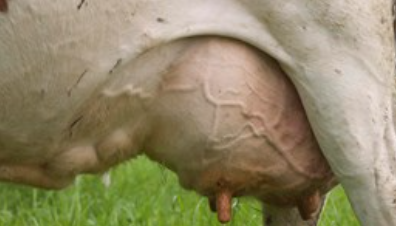Around one quarter of all dairy cows may be experiencing some degree of lameness at any one time. The average cost of an incidence of lameness, in terms of treatment costs, loss of yield and potential for shortened productive life of the cow may be in the region of £180, which at current levels equates to nearly £15,000 for an average-sized herd. The general causes of lameness are:
- poor quality floors in cattle housing
- poor cow tracks
- cows being forced to stand for too long on hard surfaces
- poorly-designed cubicles
- ineffective foot trimming
- infectious diseases and poor nutrition
Good record-keeping and effective recognition of the problems can help in determining suitable strategies for reducing future mobility problems specific to individual herds.
Identifying lesions
Recognising why your cows are lame is important for their treatment, as well as preventing it in the future. Our photographs and descriptions can help you to identify lesions that cause lameness and check your herd’s foot health.
Watch our Infectious Claw Horn Lesions webinar
Mobility scoring
The mobility score of your herd shows you how many cows are lame at any one time. This allows you to more effectively manage your control plan and treatment.
Find out more about mobility scoring
Foot trimming
Regularly checking your cows’ feet and monitoring horn conformation will allow you to properly manage horn growth and prevent lameness. Many non-infectious causes of lameness are treated using a combination of foot trimming and blocking, so it is important to know how to manage this.
Treating lame cows
Lameness does not resolve itself and the faster you intervene, the sooner the animal recovers. Quick treatment can also prevent damage occurring deep within the foot, which protects against lameness in the future.
Find out how to treat your herd
Healthy Feet
Healthy Feet can help you reduce lameness on your farm by identifying and applying the right solutions. It will help you diagnose the problems, devise an action plan and develop the skills needed for long-term lameness control.
Healthy Feet Lite a scaled-down version of the Healthy Feet Programme to make it more accessible to farmers.
Find out about Healthy Feet Lite
Lameness Cost Calculator
This calculator helps farmers to calculate the impact of lameness on their farm business, understand the breakdown of the lameness costs as well as the extra profit potential of reducing lameness through Healthy Feet or Healthy Feet Lite.
Access the Lameness Cost Calculator
Cow tracks
Cow tracks enable your herd to move safely around your farm, have other advantages. Learn how to design and build an effective cow track that benefits both you and your cows.
Browse our cow tracks guidance
Related content
Explore farmer case studies about lameness
Improving dairy herd mobility podcast



